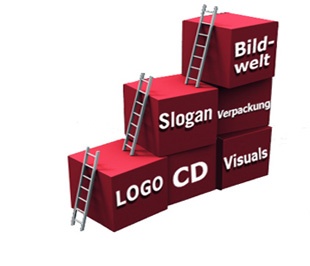Produkt- und Servicemanagement
„Ein Text ist nicht dann vollkommen,
wenn man nichts mehr hinzufügen,
sondern nichts mehr weglassen kann!“
Antoine de Saint-Exupéry
Das Gericht muss dem Gast und nicht dem Koch schmecken
Wie sieht der optimale Mobilfunktarif für 20- bis 29-jährige aus? Welchen Unterschied macht es, ob der wechselbare Kopfstützenbezug im Eisenbahnwaggon aus Baumwolle oder Polyester ist? Beeinflusst die Verpackung meines Schnittkäses die Geschmackswahrnehmung? Soll die Deckung von Bergungskosten standardmäßig Bestandteil meiner Unfallversicherung sein oder als Add-on angeboten werden? Welche Benefits soll unter Berücksichtigung von Kundennutzen- und Kostenaspekten ein Vielfliegerprogramm beinhalten – und kann man dieses Leistungsbündel weltweit standardisieren? Wie kann ich das Modell einer wenig prestigeträchtigen Kfz-Marke durch gebrandete Zusatzausstattungen so aufwerten, dass Image und Zahlungsbereitschaft steigen?
Bei solchen und anderen Fragen, die sich im Zusammenhang mit der Produktgestaltung stellen, möchten wir Sie unterstützen: Wir analysieren, welche Angebotsbestandteile und -ausprägungen bzw. welche Leistungskombinationen wirklich Kundennutzen stiften und ggf. auch, welchen Aufpreis sie aus Kundensicht rechtfertigen.
Bei komplexen Produkten mit einer Vielzahl denkbarer Variationsmöglichkeiten haben wir mit der Conjointanalyse (adaptiv oder choice-based) ein mächtiges Werkzeug, bei dem es nicht einmal nötig ist, im Vorhinein die zu testenden Produktalternativen festzulegen. Sie haben vielmehr die Möglichkeit, im Nachhinein „am Reißbrett“ aus den einzelnen Produktfeatures verschiedenste Bündel zusammenzustellen und diese gegeneinander zu testen. Mit dem marketmind Szenariorechner können wir auch das Konkurrenzumfeld berücksichtigen und Marktanteilsprognosen für die zusammengestellten Produkte berechnen.
Vor allem bei Produkten, die individuell auf den Kunden zugeschnitten werden, empfiehlt sich der Einsatz unseres Produktkonfigurators. Bei Versicherungen gleicht oft kein Vertrag dem anderen: unterschiedliche zu versichernde Risiken, unterschiedliche Deckungssummen, unterschiedliche Risikoklassen etc. Was für die klassische Marktforschung ein Problem darstellt, löst unser Produktkonfigurator, der bereits in der Befragungssituation die unterschiedlichen Gegebenheiten des Respondenten berücksichtigt. Dadurch können auch bei stark individualisierten Angeboten valide Informationen zur optimalen Gestaltung der Angebote gewonnen werden.
Sollten Sie noch am Anfang der Produktentwicklung stehen, generieren wir vorab durch qualitative Methoden wie Focus Groups und Tiefeninterviews Inputs für die Produktentwicklung.
Wir freuen uns, wenn am Ende das Produkt dem Kunden schmeckt – und Ihnen dadurch auch.















